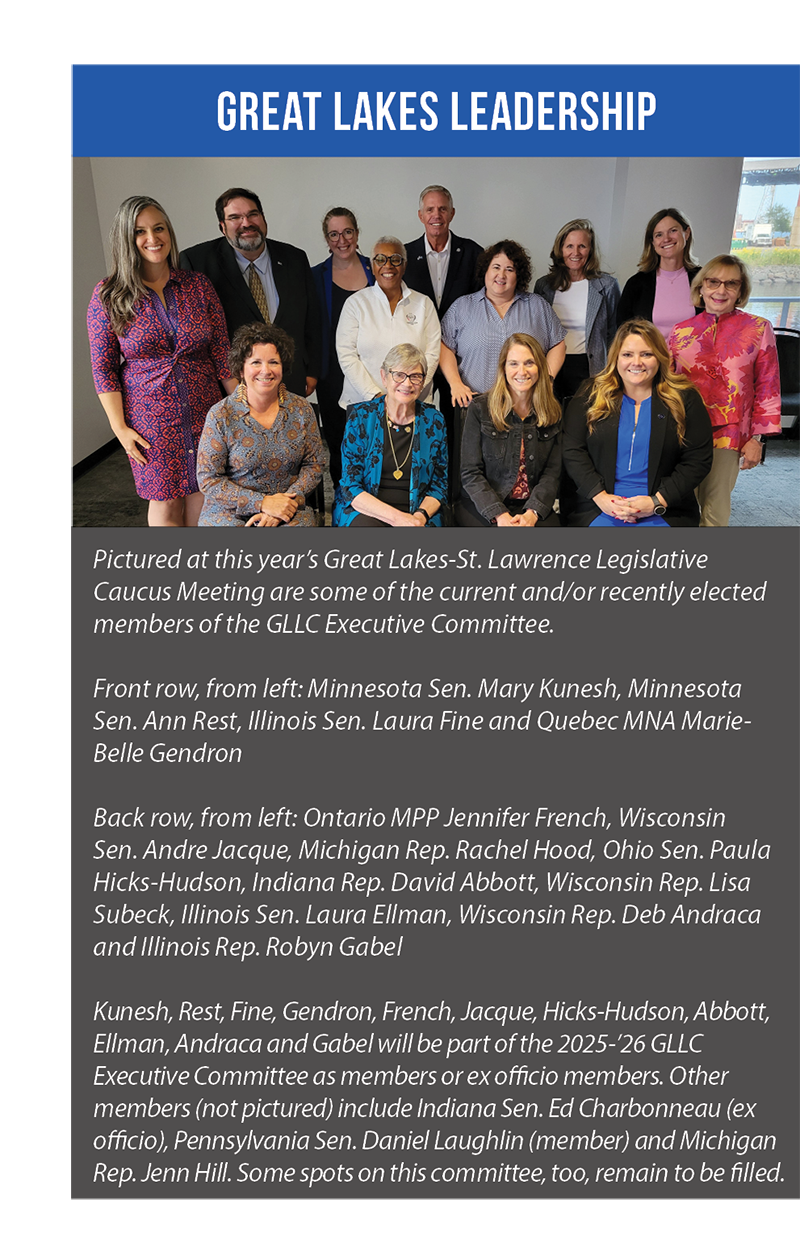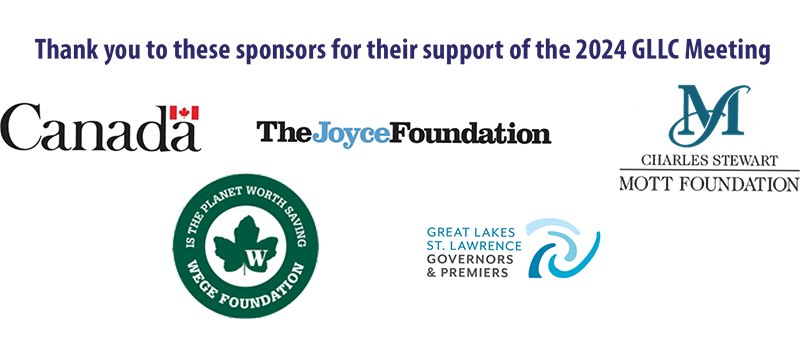Great Lakes legislators take actions on climate resiliency and water withdrawals, elect leadership team
Forty legislators representing six U.S. states and two Canadian provinces traveled to Duluth, Minn., in early September to explore policies designed to protect and restore the Great Lakes.
At this year’s Great Lakes-St. Lawrence Legislative Caucus (GLLC) Annual Meeting, participating legislators adopted policy recommendations on climate resiliency, passed a resolution to study large water withdrawals from within the Great Lakes-St. Lawrence River Basin, and elected new officers and an Executive Committee to serve in 2025-2026.
CSG Midwest provides staff support to the nonpartisan, binational caucus, which aims to strengthen the role of state and provincial legislators in the policymaking process. Through membership and participation in the GLLC, legislators are able to collaborate, educate and take actions on issues related to the restoration, protection, and sustainable use of the Great Lakes and St. Lawrence River for current and future generations.
 The two newly elected officers of the caucus are Illinois Sen. Laura Fine and Indiana Rep. David Abbott. Along with these two officers, the caucus has an Executive Committee of legislators to oversee and guide its work (see photo and caption). Officers and committee members are chosen for two-year terms.
The two newly elected officers of the caucus are Illinois Sen. Laura Fine and Indiana Rep. David Abbott. Along with these two officers, the caucus has an Executive Committee of legislators to oversee and guide its work (see photo and caption). Officers and committee members are chosen for two-year terms.
At the Annual Meeting in Duluth, participants heard presentations on flood resilience, the Fond du Lac Band of Lake Superior Chippewa’s water program, green infrastructure, the Great Lakes compact, the management of plastic waste, international science collaboration on the Great Lakes, and Minnesota’s implementation of recently passed PFAS regulations. In addition, the group toured the Duluth Seaway Port Authority terminal and went out on Lake Superior with researchers from the University of Minnesota’s Large Lakes Observatory.
GLLC leadership also participated in a tree planting in partnership with the Great Lakes St. Lawrence Governors and Premiers and the city of Duluth as part of the Regional Tree Initiative. The goal of the initiative is to plant 250 million trees in the Great Lakes region by 2033.
The Great Lakes-St. Lawrence Legislative Caucus meets in person once a year. It also holds policy-focused institutes for legislators, tracks state and federal bills on water and Great Lakes policy, holds web-based meetings, and gives members the chance to serve as a voice for the region on federal Great Lakes policy.
Membership is free and open to all legislators representing the Great Lakes’ eight U.S. states and two Canadian provinces.
• How legislators can join the GLLC »
